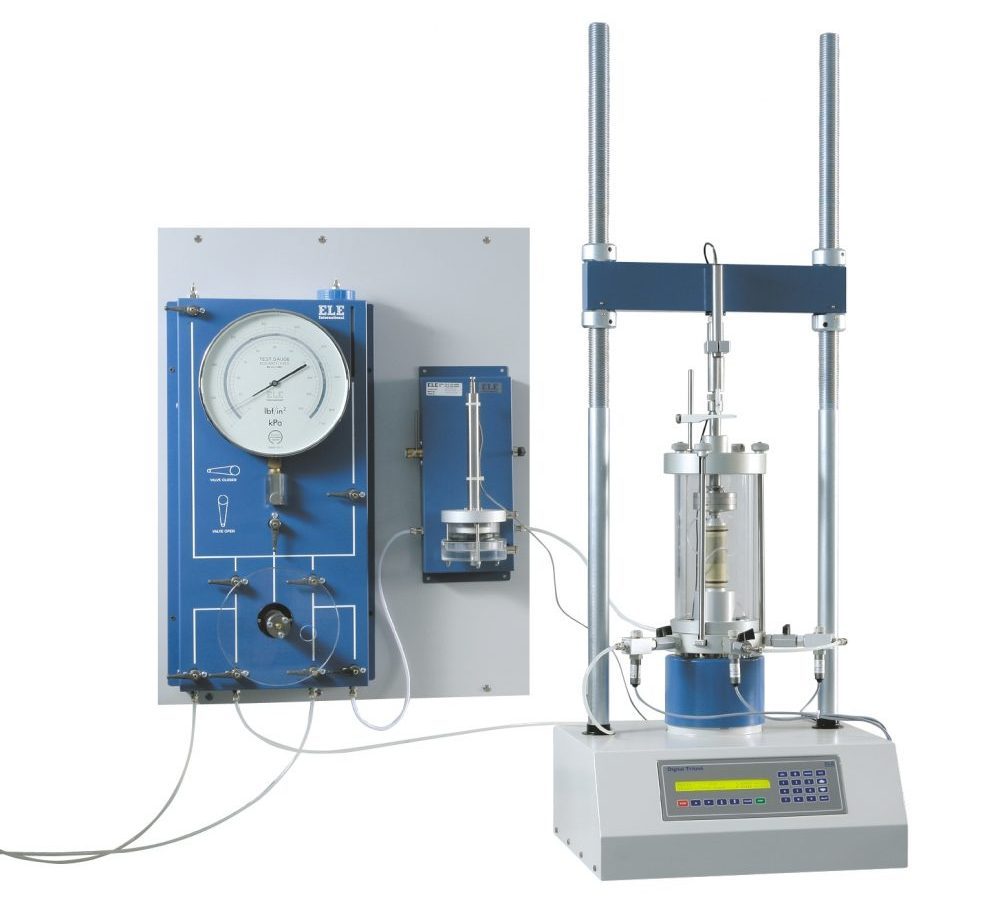
Soil Strength (Triaxial)
- Category: General Construction News
- Date: 28-01-2020
Soil Strength (Triaxial)
There are two main stages to the soil testing process – consolidation and shearing. In the first stage stresses are applied to mimic those acting on the soil in the field due to the weight of overlying strata or structures. In the second stage an additional stress is applied to reach peak failure and beyond, under specific drainage conditions. The additional stress applied to the specimen should correspond to the field loading situation, including both vertical and horizontal stresses. As a result, it will be possible to determine how much change in load the soil can sustain without failing and how much deformation will occur under normal conditions.
Triaxial soil tests are generally performed on cylindrical specimens by simulating field conditions as closely as possible. Typically, these tests are designed to measure mechanical properties such as stress–strain relations, volume change or pore pressure behaviour, and shear strength of the soil.
The measurement of total stress and effective stress requires different methods and different equipment. Total stresses are normally measured in a triaxial cell where the sample is subject to a confining pressure. A normal load is applied with the sample being confined within a rubber membrane so that no drainage in or out of the specimen is allowed. Pore water pressures are not normally measured, and the undrained test is often referred to as the QU-TXL (Quick Undrained) test.
Effective stresses can be measured in a triaxial cell and include the measurement of back pressure, pore water pressure and volume change; all of which can be used to calculate the required engineering properties. Effective stress soil testing is usually referred to as consolidated drained (CD) or consolidated undrained (CU). Generally the CD test is applicable to sands, while both the CU and CD test can be used with clays.
In order to determine which test equipment is required, a manufacturer such as ELE will need to know:
- Test Standard
- Type of test required (Effective stress, Permeability, Total Stress or Unconfined compression)
- Sample size
- Manual operation (dial gauges) or automatic (software controlled with datalogging)
- Pressure system (oil and water or pneumatic)
- Number of sample cells
